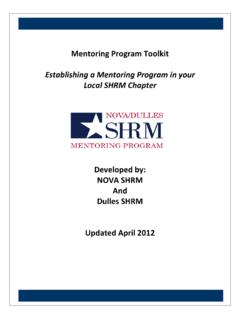Transcription of Getting Started in KiCad - docs.kicad.org
1 Getting Started in KiCad The KiCad Team Table of Contents ..to Introduction .. KiCad ..2..and Downloading ..installing .. KiCad ..2..2. Support ..Concepts Basic ..and ..Work ow ..3.. Design PCB ..Work ow ..6..Part Tutorial ..1: ..Project ..7..Part Tutorial ..2: ..Schematic ..9.. Library Symbol ..Table ..Setup ..9..Editor Schematic ..Basics ..9..Sheet Schematic ..Setup .. 10..Symbols Adding ..to ..the .. Schematic .. 11.. and Selecting .. Moving ..Objects .. 13.. the Wiring ..Schematic .. 14..Symbol Annotation, ..Properties, .. and .. Footprints .. 15.. Rules Electrical ..Check .. 17..of Bill .. Materials .. 18..Part Tutorial ..3: ..Circuit ..Board .. 20.. Editor PCB ..Basics .. 20..Setup Board ..and ..Stackup .. 20..Changes Importing .. From ..Schematic .. 23..A. Drawing ..Board ..Outline .. 25..Footprints Placing .. 25..Tracks Routing .. 27..Copper Placing ..Zones .. 29..Rule Design .. Checking .. 31.
2 Viewer 3D .. 33..Outputs Fabrication .. 34..Part Tutorial ..4: ..Custom ..Symbols ..and ..Footprints .. 37..and Library ..Library .. Table .. Basics .. 37..New Creating .. Global ..or ..Project .. Libraries .. 38..New Creating .. Symbols .. 38..New Creating .. Footprints .. 41..Symbols, Linking ..Footprints, ..and ..3D..Models .. 49.. To Where ..Go .. From ..Here .. 52..Learning More .. Resources .. 52.. Improve Help .. KiCad .. 52.. Copyright This document is Copyright 2010-2022 by its contributors as listed below. You may distribute it and/or modify it under the terms of either the GNU General Public License ( ), version 3 or later, or the Creative Commons Attribution License ( ), version or later. All trademarks within this guide belong to their legitimate owners. Contributors Graham Keeth, Jon Evans, Glenn Peterson. Former Contributors David Jahshan, Phil Hutchinson, Fabrizio Tappero, Christina Jarron, Melroy van den Berg.
3 Feedback The KiCad project welcomes feedback, bug reports, and suggestions related to the software or its documentation. For more information on how to sumbit feedback or report an issue, please see the instructions at 1. Introduction to KiCad KiCad is an open-source software suite for creating electronic circuit schematics, printed circuit boards (PCBs), and associated part descriptions. KiCad supports an integrated design workflow in which a schematic and corresponding PCB are designed together, as well as standalone workflows for special uses. KiCad also includes several utilities to help with circuit and PCB design, including a PCB calculator for determining electrical properties of circuit structures, a Gerber viewer for inspecting manufacturing files, a 3D viewer for visualizing the finished PCB, and an integrated SPICE simulator for inspecting circuit behavior. KiCad runs on all major operating systems and a wide range of computer hardware.
4 It supports PCBs with up to 32 copper layers and is suitable for creating designs of all complexities. KiCad is developed by a volunteer team of software and electrical engineers around the world with a mission of creating free and open-source electronics design software suitable for professional designers. The latest documentation for KiCad is available at Downloading and installing KiCad KiCad runs on many operating systems, including Microsoft Windows, Apple macOS, and many major Linux distributions. You can find the most up to date instructions and download links at These instructions are not included in this manual as they may change over time with the release of operating system updates. KiCad stable releases occur periodically per the KiCad Stable Release Policy. New features are continually being added to the development branch. If you would like to take advantage of these new features and help out by testing them, please download IMPORTANT the latest nightly build package for your platform.
5 Nightly builds may introduce bugs such as file corruption, generation of bad Gerbers, etc., but it is the goal of the KiCad Development Team to keep the development branch as usable as possible during new feature development. Support If you have ideas, remarks or questions, or if you just need help: The official KiCad user forum is a great place to connect with other KiCad users and get help. Join our communities on Discord or IRC for real-time discussion with users and developers. Check the KiCad website for learning resources made by the KiCad community. 2. Basic Concepts and Workflow The typical workflow in KiCad consists of two main tasks: drawing a schematic and laying out a circuit board. The schematic is a symbolic representation of the circuit: which components are used and what connections are made between them. Schematic symbols are pictorial representations of electronic components in a schematic, such as a zigzag for a resistor or a triangle for an opamp.
6 The schematic contains symbols for every component in the design, with wires connecting pins in the symbols. The schematic is typically drawn first, before laying out the circuit board. 3. The board is the physical realization of the schematic, with component footprints positioned on the board and copper tracks making the connections described in the schematic. Footprints are a set of copper pads that match the pins on a physical component. When the board is manufactured and assembled, the component will be soldered onto its corresponding footprint on the circuit board. KiCad has separate windows for drawing the schematic ("Schematic Editor"), laying out the board ("PCB. Editor"), and editing symbols and footprints ("Symbol Editor" and "Footprint Editor"). KiCad comes with a large library of high quality, user contributed symbols and footprints, but it is also simple to create new symbols and footprints or modify existing symbols and footprints.
7 4. Finally, it is important to understand that KiCad has a project-based workflow. A KiCad project is a folder with a project file, a schematic, a board layout, and optionally other associated files such as symbol and footprint libraries, simulation data, purchasing information, etc. Many project-related settings, including net classes and design rules, are stored at the project level. Opening a board outside of its associated project may result in missing design information, so be sure to keep all files associated with a project together. 5. PCB Design Workflow Typically, the schematic is drawn first. This means adding symbols to the schematic and drawing the connections between them. Custom symbols may need to be created if appropriate symbols are not already available. At this stage footprints are also selected for each component, with custom footprints created as necessary. When the schematic is complete and the design has passed an electrical rules check (ERC), the design information in the schematic is transferred to the board editor and layout begins.
8 The schematic describes which components are in the design and how they are connected; the board editor uses this information to make layout easier and to prevent mismatches between the schematic and PCB. The layout process requires careful placement of each footprint on the circuit board. After component placement, copper tracks are drawn between components based on the connections in the schematic as well as other electrical considerations, such as trace resistance, controlled impedance requirements, crosstalk, etc. Often the schematic will need to be updated after layout has begun; the schematic changes can be easily pulled into the board design. The reverse can often happen: any design changes made in the board layout can be pushed back to the schematic to keep the two consistent. When the board layout is complete and the board has passed the Design Rules Check (DRC), fabrication outputs are generated so that the board can be manufactured by a PCB fabricator.
9 6. Tutorial Part 1: Project The first thing to do when starting a new design is to create a new project. Opening KiCad will bring up the Project Window. Click File New Project, browse to your desired location, and give your project a name, such as Getting - Started . Make sure the Create a new folder for the project checkbox is ticked, then click Save. This will create your project files in a new subfolder with the same name as your project. At left, the Project Files pane lists the files in the new project. There is a project file with the extension .kicad_pro , a schematic file with the extension .kicad_sch , and a board file with the extension .kicad_pcb . These files all share a name with your project. There may also be a -backups directory: KiCad will automatically create backups of your project when you save, and optionally at fixed time intervals. The backup settings are configurable by going to Preferences.
10 Preferences Common Project Backup. 7. At right of the Project Window, there are buttons to launch the various tools that KiCad provides. Launching these tools will automatically open the associated design file (schematic or PCB) from the current project. Start by opening the Schematic Editor. 8. Tutorial Part 2: Schematic Symbol Library Table Setup The first time the schematic editor is opened, a dialog will appear asking how to configure the global symbol library table. The symbol library table tells KiCad which symbol libraries to use and where they are located. If you have installed the default libraries with KiCad , which is recommended, select the default option: Copy default global symbol library table (recommended). If KiCad cannot find the libraries in their expected installation location, this option will be disabled. In this case, the user should choose the second option, Copy custom global symbol library table.







